What do you feed baby doves
Baby Mourning Doves: Caring for and Feeding Abandoned Dove Babies
Sharing is caring!
36 shares
- Share
You step outside to get the mail and you find a baby bird in your driveway—what do you do? Should you leave it, rescue it, try and put it back in its nest?
It can be nerve-wracking finding a baby bird on the ground and wondering what the best option is, especially since not all species can be treated the same.
Here are a few tips to prepare you for that day:
Step 1: don’t panic
Step 2: read this article
Here, you’ll learn all about baby Mourning Doves and how to care and feed them if they’re abandoned. It’ll be just a little more information in your pocket, should you ever be in this situation.
Let’s dive in!
Baby Mourning Doves are called squabs or chicks.
When they are just hatchlings and a few days old, their bodies are covered in patchy, yellowish down. The down is very thin and you can still see their naked bodies. Their bills are dark, as well as their faces, and their eyes will be closed. At this point, they are only a few inches long.
Around 7-ish days, the squab’s eyes will be open and will be dark. They also will have started to get in some pin feathers. These look just like the shaft of a feather without the barbs. They will lay in a relatively ordered fashion. You’ll also still see the scraggly, yellowish down poking up around the pin feathers, which makes the nestling look pretty frazzled and messy! They will have almost doubled in weight and size.
Around 12 days, the Mourning dove will be a fully feathered fluffball. It’s feathers will be a slaty brown color. They will have grown so much that they will be larger than your palm. At this size and age, the babies will be about ready to leave the nest and take flight for the first time!
What do baby mourning doves eat?
Unlike many other baby birds, little doves don’t gape—the mouth wide open, begging for food behavior.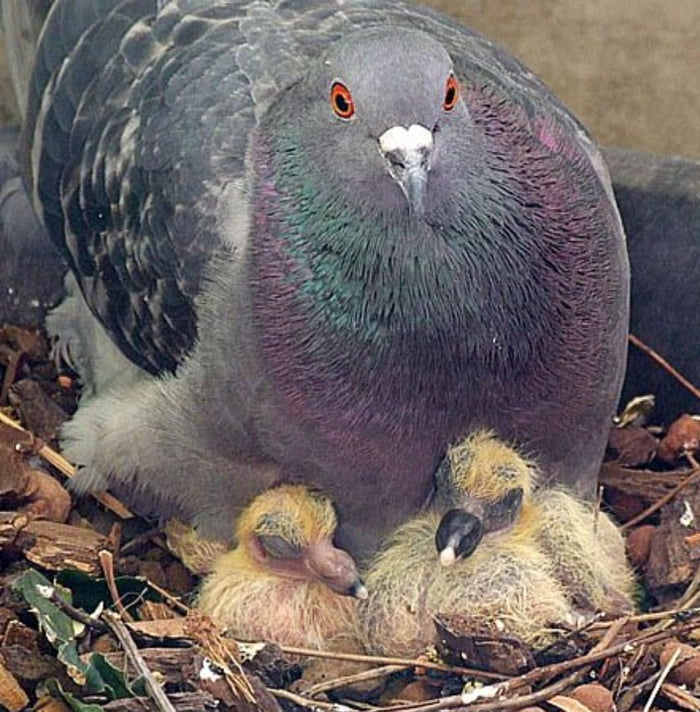 When they’re hungry they will root around. The parents provide “crop milk” to their babies.
When they’re hungry they will root around. The parents provide “crop milk” to their babies.
Crop milk (also known as pigeon milk) is a semi-solid excretion that is made by the sloughing of fluid-filled cells from the lining of the crop.
The crop is a thin-walled, sac-like food-storage chamber that extends off the esophagus and is normally part of the digestive system. Food can be stored here quickly while the bird is foraging in the open and allows the bird to go back into a secluded area to digest. Most birds have crops, but not all make crop milk.
As said before, the crop is normally part of the digestive system, but it shifts its function to milk production just a day or two prior to the eggs’ hatching. This is believed to be caused by hormonal changes. During that time, the parents may stop eating entirely so there is no seed in the crop. Brand new hatchlings aren’t able to digest seed yet, so this is for the better! After several days of feeding crop milk to the babies, the hormone levels taper off and the crop no longer produces as much milk.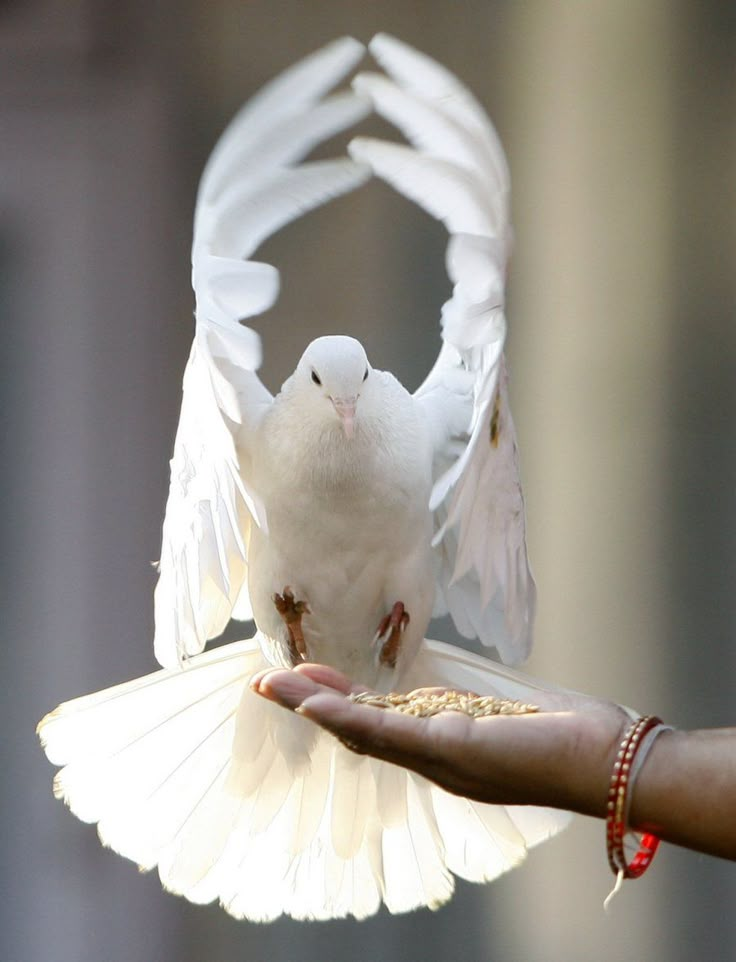 By this time, the squabs are able to digest regurgitated seeds from mom and dad.
By this time, the squabs are able to digest regurgitated seeds from mom and dad.
Crop milk is nutrient-dense and contains more protein and fats than human or cow milk. It also has immune-building properties with antioxidants and antibodies from the parent.
Both parents can produce crop milk, so both are able to feed their babies. This is done by opening their mouths wide and allowing the squab to stick their little heads in and suck it up through their bills like a straw. This is important to keep in mind if having to hand feed baby doves, as sucking is their natural instinct and the safest way for them to eat.
Crop milk substitute
If you find a squab that needs rescuing (we’ll talk about how to determine this in the next section) chances are you’re going to need to make a homemade crop milk substitute or purchase a formula.
A great formula substitute is RoudyBush Squab diet. Yes—there are pictures of parrots on it. Don’t worry, it can be used for baby doves, too.
Roudybush Squab Diet For Birds, 1-Pound
- No Added Sugars Or Colors
- 100-Percent Edible And No Animal By Products
- Scientifically Formulated
Last update on 2022-10-15 / Affiliate links / Images from Amazon Product Advertising API
The only potential issue with this is it will need to be ordered online and might take a day or two to arrive. If it’s likely you’ll be hand-rearing the baby for a few weeks, this is a good option.
Another substitute is Kaytee Exact Handfeeding Formula which is available at pet stores. Some reviewers say this formula doesn’t offer the babies as well of a nutritional panel as RoudyBush, and the birds are often below the curve for weight. If it’s a matter of life or death for a squab, this is better than nothing.
A last option if you don’t have access to a pet store and need it immediately is homemade formula using baby cereal. Make it more runny if the baby is wee little and gradually thicken it up as they get bigger. A good test is to see how quickly their crop empties. If it empties too quickly, start to thicken it up.
How often do baby mourning doves need feeding?
Brand new babies will need to be fed more often than older squabs. The younger doves will also eat formula that is more watered down. All feedings should occur within a 12-hour span.
- 0-4 days old: 5 feedings per day
- 5-7 days old: 4 feedings per day
- 8-14 days old: 3 feedings per day
- Fledgling: seeds
The safest way to feed a baby dove is by pouring the formula onto a tablespoon and letting them suck it up. Remember earlier when I said to keep their straw-sucking instincts in mind? If food is poured into their mouths, they may aspirate by trying to suck while you’re pouring or dropping it in.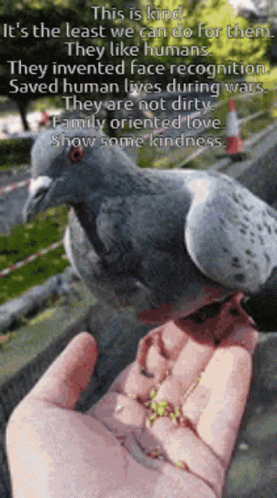 So it’s best to let them take the lead and let them slurp it up themselves!
So it’s best to let them take the lead and let them slurp it up themselves!
Does the baby mourning dove need to be rescued?
A few different factors go into the response to this situation.
The first step in deciding if a baby dove needs rescued is by determining what stage of growth it’s in. The second is analyzing what the situation is while keeping its growth stage in mind. For example, a 2-day old baby found in the driveway vs a 14 day old found in the driveway will have different solutions!
Baby dove growth stages
Stage 1: unfeathered
Unfeathered babies are roughly 0-6 days old. This early in the brooding stage, it’s unusual to find babies out of the nest, but not impossible.
One reason a baby might be out is if the entire nest was blown over or knocked down. Wind, predators, or weather can all knock a nest loose.
Babies can also be found on the ground if the parents perceive it to be defective in some way and decide to remove it from the nest.
Babies this young cannot be left on the ground!
At this point in their life, they are too young and too naked to keep themselves warm. If a baby is found, it needs to be warmed up immediately. This can be done using a heating pad on the low setting or using electronics that heat up and are warm to the touch, such as laptops or game systems. A little heat goes a long way for them, and this is the first priority.
While the baby is warming up, see if the nest can be located. If the nest turns out to be blown over, see if it can be put back securely so it won’t fall again. If it can’t, find a new place for it that isn’t entirely out in the open and won’t get drenched when it rains.
Once the baby warms up, put it back in the nest and watch for the parents to come back to it. If they do, you’re good to go. If not, the baby might need hand-reared.
If the baby you find is not from a blown over nest and was kicked out by its parents, it will need to be hand-reared with a crop milk substitute, at least for a few days. After a few days of feeding, put it back in the nest and see if the parents take care of it. If they kick it out again, it will need hand-reared until it’s old enough to survive on its own.
After a few days of feeding, put it back in the nest and see if the parents take care of it. If they kick it out again, it will need hand-reared until it’s old enough to survive on its own.
If it turns out that you have to hand-rear the baby for a while, a makeshift nest box will be needed with either a fake nest inside or nesting material like straw. A heat lamp is the best option to keep the baby warm, so your heating pad doesn’t get dirty.
Stage two: partially feathered
Partially feathered babies are roughly 7 days old to fledging age (12-15 days old).
At this age the babies are far enough along that the parents probably didn’t kick them out, so if a baby is found on the ground, it’s almost always from nest failure. This is actually a good thing because there’s a better chance the parents will take back over when the nest is fixed.
As with the younger babies, get these squabs warmed up. Once they’re warm, investigate the nest situation.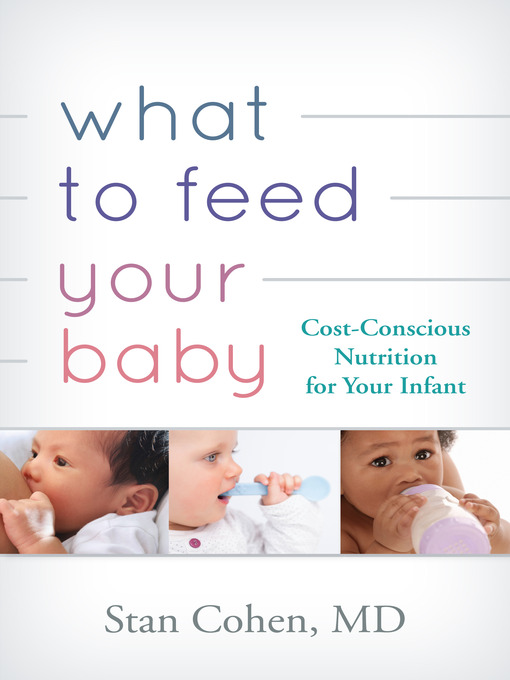 It either fell in a storm or broke apart because it was poorly constructed.
It either fell in a storm or broke apart because it was poorly constructed.
If it only fell, try and secure it as mentioned before. If the nest is found to be broken or falling apart, a new one will be needed. You can buy fake nests from a craft store, or make one. Don’t be afraid to make them, there are online tutorials to show you how!
Once the old or new nest is up, put the baby inside and wait for the parents to come. If they don’t come by nightfall, bring the baby in for the night and then return them again in the morning. If the parents still don’t come back, by the afternoon or evening, the baby will need to be hand-reared and kept in a nest box with heat.
Stage three: fully feathered
Fully feathered babies are fledgling age (12-15 days, give or take) and are nearly self-sufficient. If one of these babies is found on the ground, it doesn’t need to be returned to a nest. Actually, it’s highly possible that this baby just took its first flight from its nest to the ground!
Babies at this age are still being monitored from afar and fed by their parents. The best thing you can do for this little one is to leave it be. Of course, there are exceptions.
The best thing you can do for this little one is to leave it be. Of course, there are exceptions.
If the fledgling is in a high traffic area, like a driveway or close to a road or sidewalk, move it somewhere more relaxed. Don’t move it across town, because the parents are still caring for it, just move it a few feet away to safety.
If the fledgling doesn’t try to run away from you when you approach it and it appears cold to the touch and lethargic, it might not be getting fed by mom and dad. You can gently palpate the crop to feel if there’s food inside. If there is, the bird might have an injury or may be sick, in which case it’s best to call a wildlife rehabilitator. If there isn’t anything in the crop, the bird might just need a meal. Some mashed bird seed might help it out.
In conclusion
Helping out a baby bird can seem daunting, but with the right information, you can do it safely and confidently. If you’re still unsure, you can always call a rehabilitation center to see if they can take the baby in!
Credits
Chaifetz, T. (2017, September 26). How to Determine the Age of a Mourning Dove Hatchling. Retrieved 2020, from https://animals.mom.me/how-to-determine-the-age-of-a-mourning-dove-hatchling-12452713.html
(2017, September 26). How to Determine the Age of a Mourning Dove Hatchling. Retrieved 2020, from https://animals.mom.me/how-to-determine-the-age-of-a-mourning-dove-hatchling-12452713.html
Ehrlich, P., Dobkin, D., & Wheye, D. (1988). Bird Milk. Retrieved 2020, from https://web.stanford.edu/group/stanfordbirds/text/essays/Bird_Milk.html
Mayntz, M. (2019). Do Birds Produce Milk for Their Young? Retrieved 2020, from https://www.thespruce.com/glossary-definition-of-crop-milk-385209
Mihaylo, K. (2017, August 11). How to Care for a Baby Mourning Dove. Retrieved 2020, from https://animals.mom.me/care-baby-mourning-dove-6968.html
Sebastiani, J. (2012, April 26). Baby Birds: A Dove Story. Retrieved 2020, from http://blog.delawarenaturesociety.org/2011/11/10/baby-birds-a-dove-story/
White, H. (2014). Mourning Dove. Retrieved 2020, from http://www.diamonddove.info/bird13%20Mourning.htm
Sharing is caring!
36 shares
- Share
What Do Mourning Doves Eat?
More Great Content:
Many people have heard the sorrowful wooing calls and hoots of the mourning dove.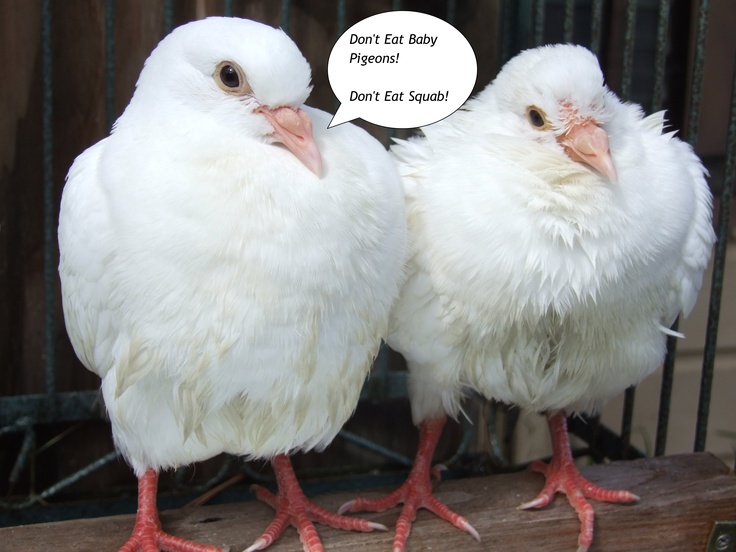 After all, they have a wide range that includes all of Central and North America. Although its hoot is often confused for an owl’s, the mourning dove is a very different sort of bird that is easily recognized by its distinct silhouette and the fact that they often appear in pairs.
After all, they have a wide range that includes all of Central and North America. Although its hoot is often confused for an owl’s, the mourning dove is a very different sort of bird that is easily recognized by its distinct silhouette and the fact that they often appear in pairs.
The foods mourning doves eat also separates them from owls and other birds. You will not see a mourning dove swoop down to catch a field mouse. Let’s take a look at what you can put out in your yard to entice mourning doves to come back and fill your terrace with song.
What Foods Do Mourning Doves Eat?
Mourning doves are granivores and prefer seedsA-Z-Animals.com
Mourning doves eat seeds since they are granivores, preferring seeds to any other foods. They will also consume grains, some fruits, herbs, and wild grasses. They prefer to eat foods that are on the ground that are easy to obtain. They’re also very opportunistic eaters, consuming some foods that are only seasonally available.
Mourning doves prefer to linger in areas where there is a greater level of food diversity. Remember, these birds mate for life, so they need consistent food for each member of the pair.
A List of Foods Mourning Doves Eat
Mourning doves will forage for food on the groundTom Cantaffa/Shutterstock.com
Although mourning doves are granivores and seeds make up almost all their diet, they eat many different foods. Here are many of the specific foods that mourning doves consume regularly:
- Peanuts
- Corn
- Millet
- Buckwheat
- Rye
- Pine nuts
- Foxtail
- Sunflower seeds
- Canary grass
- Wheat
- Safflower
- Rapeseed
- Witchgrass
Interestingly, mourning doves tend to favor sunflower seeds and other foods that they can see without having to scratch the ground for it. Another point of interest is that these birds tend to choose foods based on their size.
For example, studies showed that mourning doves prefer shorter and narrower corn seeds so they have the easiest experience foraging.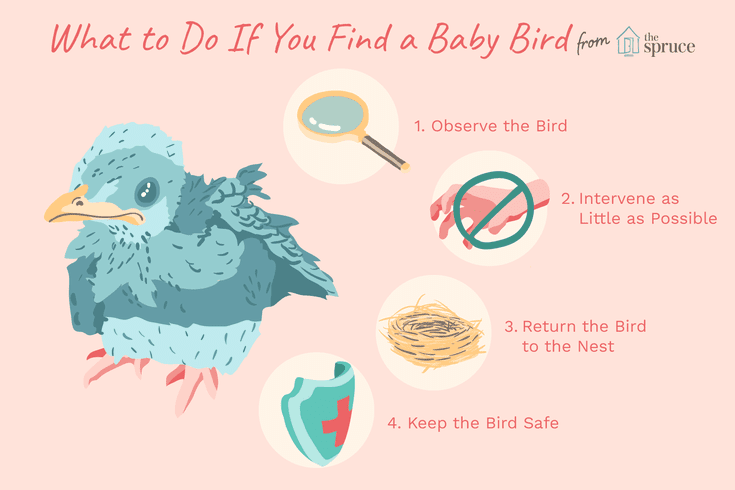
Although it is an exceedingly rare occurrence, mourning doves have been observed eating other foods when their favored foods are not plentiful. These birds occasionally eat insects to bolster their diet, but they will almost always prefer to eat seeds.
How Do Mourning Doves Forage for Food?
A mourning dove foraging and feedingBrooke Bowdren/Shutterstock.com
This species has interesting foraging behaviors. They spend a lot of time on the ground looking for food, but these birds are not known for scratching the earth and trying to find something to eat. These birds prefer to look on the ground and seek directly visible food.
Like some other birds, mourning doves will feed while they’re on the ground, filling their crop. This pouch at the front of their neck can store food and begin the process of digestion. Frequently, mourning doves will fill their crop and then retreat to a safer location where they can digest their food in peace.
Their crop is also where adult birds produce crop milk, a substance fed to the young.
What Foods Do Mourning Doves Eat in the Winter?
Mourning doves are less selective in the winteriStock.com/SteveByland
Winter is a time when food becomes scarcer for all birds. Mourning doves, like many other birds, start to migrate south in the autumn months. Some of the birds leave for warmer states in the U.S. while others go farther south to Mexico and Central America.
During the fall, these birds have been observed eating foxtail millet in southern states, and they also forage around recently harvested cornfields.
In the winter months, mourning doves will continue to forage for their normally desired foods. The migration to warmer climates often supplies them with plentiful foraging opportunities. Not all of these birds migrate, though.
Some birds stay relatively close to their breeding grounds throughout the winter, where they will forage, become less active, and feed on their preferred foods or secondary foods when their first choices not available.
What Do Baby Mourning Doves Eat?
Mourning dove parents forgo seeds for the first weeks of their young’s lifepetritzaa/Shutterstock.com
Baby mourning doves exclusively eat crop milk for the first week of their lives. Both male and female adult birds can make this substance in their crops, the esophageal pouch where they store food and begin the process of digestion.
Crop milk is made from cells of the crop lining, providing necessary protein and fats to the baby birds. While producing and feeding their babies, the birds cannot eat seeds because the young birds are not prepared to digest them.
In the second and third weeks of life, baby birds eat partially digested seeds from their parents. After that, they are prepared to forage for seeds on their own.
Mourning Dove Predators
Domestic cats will hunt birds for sportiStock.com/FediushkinaElena
Unlike other birds that will eat out of hanging feeders or catch their food and take off, the mourning dove eats while rather stationary on the ground. While foraging, these birds are in tremendous danger from their predators.
While foraging, these birds are in tremendous danger from their predators.
Among the most common predators are:
- Domesticated cats
- Diurnal birds of prey like hawks and falcons
- Snakes
- Racoons
- Possums
These creatures prey upon the mourning doves, especially the young ones. If you see these birds in your yard, try to keep your pet cats inside so the birds can feed in peace.
Mourning doves eat seeds from various plants throughout the year, and you might see one eating fruit or the stray insect from time to time. They are tremendous foragers that take what is available without digging through the dirt, even if it puts them in danger from some common predators.
Their broad range of suitable foods, even if they’re mostly seeds, makes them capable of living in many different locations throughout the Western Hemisphere. If you look and listen for them, the chances are good that you will discover this species near you.
How to feed a pigeon chick at home, how many times and how?
Back
How to feed a pigeon chick?
- What do pigeon chicks eat?
- How to feed?
- First week
- Second week
- Third week
- Fourth week
- Feeding grown chicks
- How and what to drink?
- Chick care
- Can you feed a chick that has fallen out of the nest?
- Birds
- pigeons
- Keeping pigeons
- How to feed a baby pigeon?
190 likes
2 comments
Many pigeon breeders have experienced the situation where a chick needs to be hand-fed for some reason.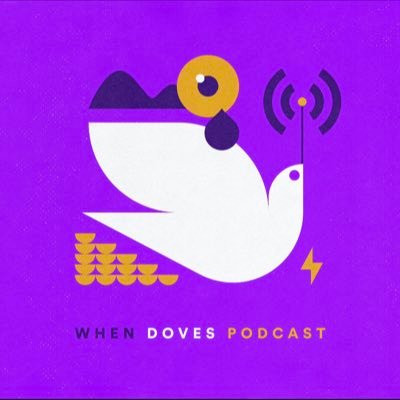 This process is very complex and requires tremendous work and patience, however, it is possible to feed pigeons, and it is definitely worth trying.
This process is very complex and requires tremendous work and patience, however, it is possible to feed pigeons, and it is definitely worth trying.
ShowHide
- What do pigeon chicks eat?
- How to feed?
- First week
- Second week
- Third week
- Fourth week
- Feeding grown chicks
- How and what to drink?
- Chick care
- Is it possible to feed a chick that has fallen out of the nest?
What do pigeon chicks eat?
The diet of pigeons is varied. However, they will be able to eat most products only after 2 or even 3 weeks of life.
Pigeons eat:
- chicken yolks;
- millet;
- oats;
- barley;
- corn;
- peas;
- polished rice;
- wheat and millet;
- wiki.
How to feed?
Feeding birds at the age of 1-3 weeks is difficult, but nothing is impossible. You will have to be patient, because a person will have to teach the feathered self-feeding. The first week is the most difficult, but the next days of his life depend on how to care for him, how many times and what to feed him.
You will have to be patient, because a person will have to teach the feathered self-feeding. The first week is the most difficult, but the next days of his life depend on how to care for him, how many times and what to feed him.
Important! The main problem during this period is the refusal of the syringe from the chicks. You need to make every effort to teach your baby to eat that way. Otherwise, the bird will die within 20 hours.
First week
The first week of life will be decisive for the bird. A large part depends on human effort and perseverance, but the instinct for survival will also play a role.
Rules for feeding in the first days of life:
- For the first 7 days, the pigeon can eat only heated (important: not boiled) chicken yolk.
- It must be given through a large syringe (50-10 cc) with a rubber tip (small nipple) that has a small hole in it. You need to squeeze out the liquid gradually, bringing the nipple closer to the bird's beak.

- Babies should be fed at least 6 times a day and given as much yolk as they are willing to eat.
Second week
The pigeons have already grown stronger, and the probability of their death has decreased. But during this period there are peculiarities in the nutrition of pigeons (for example, what kind of porridge to start feeding):
- After the 8th day of life, babies are fed with crushed steamed grains with ground eggshells. Such porridge will enrich the body with all the necessary "building" materials. You can add honey, and the bird will more readily use the mixture.
- Feed is already dispensed through a conventional large syringe.
- Food is taken at least 6 times a day until full.
Third week
Poultry must be switched to adult food, ie whole grains. Nursing babies during this period is especially interesting, as they have grown stronger and begin to show behavioral characteristics.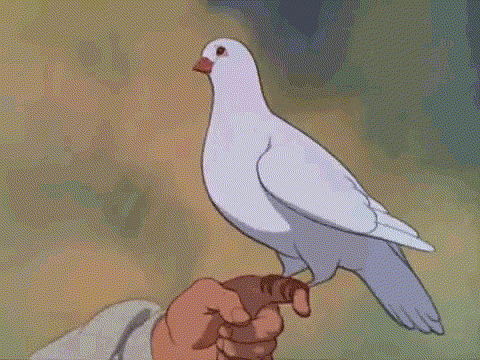
Feeding:
- Doves are transferred to whole steamed grains. If the grain becomes too large during the heat treatment, it must be divided in half. Once a day, you can give chopped greens.
- A bird at this age will not eat on its own, so it is necessary to put food in its beak.
- One feeding usually involves the birds eating 2-3 whole grains. The number of meals - 5-6 per day.
- During this period the pigeon is taught to drink water. To do this, you need to dip your beak into the water (so that the liquid does not get into the sinuses). The chick will not drink right away, but after a few attempts, instincts will take their toll, and he will start drinking.
Fourth week
Pigeons begin to feed independently and varied.
Feeding after day 21:
- Carrots, fruits (not exotic), softened bread, boiled chicken eggs.
- Feed by syringe or small bottle until full 5-6 times per day.

- Pigeons, due to the increase in the diet, will begin to consume a lot of water. Clean water must be available at all times.
Important! In the third week of life, the pigeons' eyes open, and during this period it is necessary to come to them in the same clothes so that they can remember the person.
Feeding young chicks
Grown-up individuals completely switch to adult solid food (wheat, raw seeds, peas, corn). All cultures can be crushed a little and poured into the bird feeder, since it can already eat on its own. Cabbage, herbs, nettles are used as top dressing.
How and what to drink?
Pigeons should be fed with clean water of medium temperature. It is recommended to add vitamins to the water, which will help strengthen the body and immunity, which will be the prevention of diseases. To minimize the risk of infection, the bowl of water is kept clean and the water is changed before each drink. After the third week of life, clean water should be available around the clock.
After the third week of life, clean water should be available around the clock.
Chick care
Pigeon chicks are fragile creatures that are born blind, without plumage and the ability to move the first weeks of life, so they need special conditions for survival:
- The temperature should be high (+35-40 °C) because in the natural environment, parents would warm the babies during this period.
- Complete absence of drafts. Weak individuals may not survive passing wind currents.
- Bedding should always be kept clean and dry, as bacteria develop rapidly in bird droppings.
- The room must be constantly disinfected, drinkers and feeders should be washed several times a day.
- The dovecote must be protected from insects or animals.
Is it possible to feed a chick that has fallen out of the nest?
Feeding a chick that has fallen out of the nest is difficult and, most often, such cases are fatal for the bird.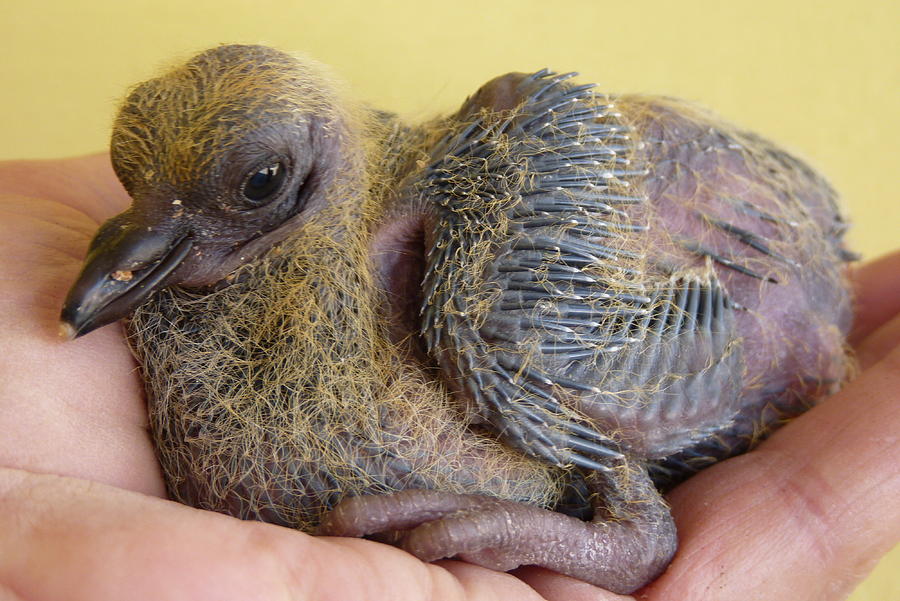 However, there are recommendations that will help you do everything to save a life:
However, there are recommendations that will help you do everything to save a life:
- Carefully pick up a fallen chick and carefully inspect its limbs for damage. If fractures are clearly visible, you can’t do without a veterinarian.
- If there are no visible injuries, the bird should be brought home as soon as possible and fed as described above. After that, you need to build a warm safe house for her.
- You need to constantly monitor the found baby, because every hour counts for him. But watching is not the same as worrying. The dove should remain at rest, and it is better for a person to watch him from the side.
- With proper feeding and good conditions, as well as with a high desire for life, a small bird will definitely get stronger and will be grateful to its savior.

Was this article helpful?
Thank you for your opinion!
Write in the comments what questions you did not receive an answer to, we will definitely respond!
You can recommend this article to your friends!
190 times already helped
How to feed an orphaned pigeon chick?
How to feed an orphaned pigeon chick?
It happens that pigeon chicks are left without the care of their parents and caring people do not want to leave the kids to certain death.
And if a person encounters such a situation for the first time, he immediately has questions: what to feed the chick? how often? how much to feed? how to feed? All these questions can be answered in this article.
What and how to feed pigeons in the first days of their life?
Pigeon chicks, in the first six days of their lives, are still very weak. In such a critical period, these crumbs need "bird" milk, which appears in the goiter of their moms and dads.
In such a critical period, these crumbs need "bird" milk, which appears in the goiter of their moms and dads.
Some pigeon breeders feed orphaned chicks with raw eggs, chicken eggs, and preferably pigeon eggs, the eggs contain all the nutrients the chick needs.
For feeding use a 20cc syringe with a piece of IV tube or regular baby pacifier, but a tube is better. A hole is made in the egg and the contents of the egg are drawn with a syringe - the protein and yolk are mixed and the chick receives a good substitute for pigeon milk. Before each feeding, the crumbs should be given a little water.
A one-day-old chick is given an egg in the amount of three cubes, and then the dose is increased. And already a three-day-old chick can feed 10 egg cubes.
On the seventh day, the pigeons' eyes open and they begin to respond better to the voice. Now you can feed your pet with small grains - millet, sorghum, rapeseed, and pre-soak larger grains with boiling water (for 10 minutes) so that it softens a little.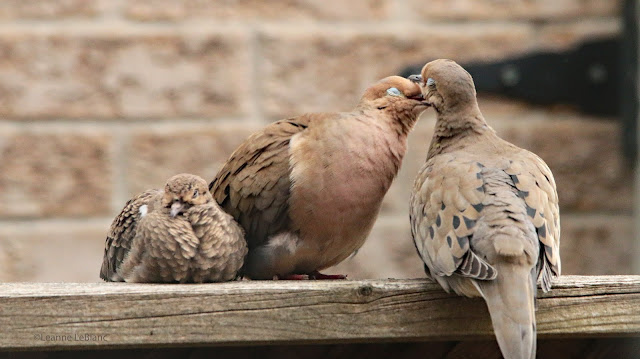 In a softened form, corn can also be given, carefully putting one grain at a time into the beak. Millet and sorghum can also be given dry, but after giving the baby some water to drink. It is advisable to add liquid vitamins for birds to the water.
In a softened form, corn can also be given, carefully putting one grain at a time into the beak. Millet and sorghum can also be given dry, but after giving the baby some water to drink. It is advisable to add liquid vitamins for birds to the water.
They also give the chicks, in a small amount, ground eggshells - the shells will deliver the necessary minerals to the body or, instead of the shells, they are fed with special mineral top dressing.
When the chick is two weeks old, he will start to squeak loudly, reminding him that it is time to feed him. And how to understand if the chick has eaten or not? Very simple. If you feel its goiter and it turns out that it is well stuffed, then the chick is full, if the goiter is empty, you still need to feed it. But do not give much water before feeding, so that the chick does not remain hungry, filling its crop with only liquid.
The amount of food and drinking regimen should be gradually increased - the goiter of the chicks is quite capacious.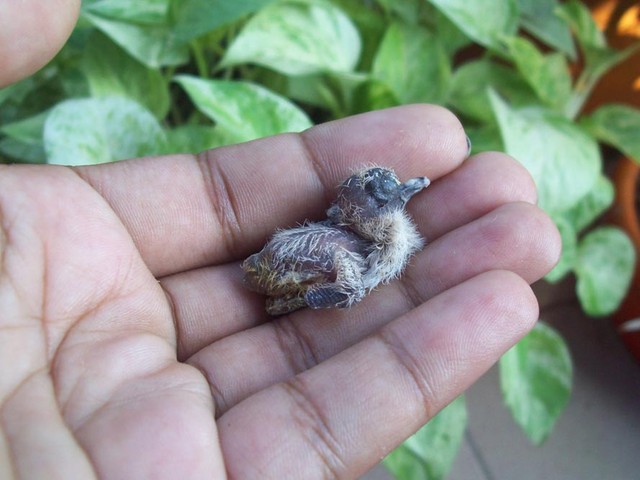
How to properly feed a pigeon chick
Two syringes are prepared in advance - one with clean warm water, you can also add vitamins for birds, and the other with raw egg liquid. For convenience, you can sit on a chair and put the chick on your knees and gently, with your left hand, slightly open its beak and insert the tip of the tube into its beak. Now slowly squeeze out the feed from the syringe. In the same way, you can water the chicks. Before each feeding, do not forget to give the crumbs a little water.
And it is most convenient to feed the chick with small grains from an insulin syringe: food from the syringe is simply poured into the beak.
You can also give a little chick water to drink in this way: dip the tip of its beak into a small bowl of water, but not too deep so that water does not get into its spout and the chick does not choke. But it is better, after all, to water the baby with the help of a twenty-cc syringe.
Please watch the video of wild pigeon chicks growing up
